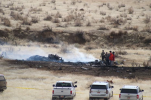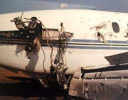AviationObserver
Pre-Flight
- Joined
- Jan 5, 2024
- Messages
- 89
- Display Name
Display name:
AviationObserver
Initially leveled at FL200 and 285kt. Then airspeed began to drop while maintaining FL200, all the way down to 180kt or so, seemingly followed by possible stall/spin, 15,000 ft/min descent to the smoking hole.
Was AP engaged and nobody did anything in response to an engine failure? Would failure of a single engine cause that? Was it intentional? Were they at FL200 w/o pressurization long enough to lose consciousness?

 globe.adsbexchange.com
globe.adsbexchange.com

Was AP engaged and nobody did anything in response to an engine failure? Would failure of a single engine cause that? Was it intentional? Were they at FL200 w/o pressurization long enough to lose consciousness?

Accident Hawker 900XP N900VA,
A Hawker 900XP, N900VA, was destroyed when it impacted terrain near Loma, Colorado. Both pilots were killed. ADS-B data suggests that the aircraft took off from Grand Junction Airport, C...
www.aviation-safety.net
ADS-B Exchange - track aircraft live
ADS-B Exchange - track aircraft live - aircraft flight history
 globe.adsbexchange.com
globe.adsbexchange.com


